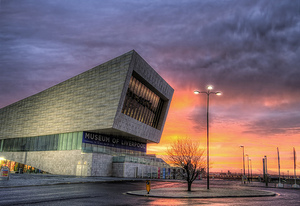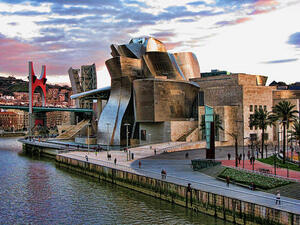They were dim and dusty: Museum, once places where exhibits were protected under glass, each one carefully catalogued and described by its technical name with minimal additional details. Today museums are much more accessible and play many more roles. They are part of the creative economy and can be drivers of regional development. Where once they looked only backwards, they now can be forces for innovation. With a new round of Cohesion Funds there are opportunities to link museums and cultural heritage into development projects.
Connecting museums to communities
I was at a conference in Leuven recently where Wim de Vos from the Museums Section of the Belgium Science Policy Office traced the trajectory of museums from the 1950s to the present. He described how in the 1950s museums saw themselves as centres for education. As societies left the land and became based in offices and factories there was a strong emphasis on preserving disappearing handicrafts.
At this time museums were strongly national in focus, with a top-down, even authoritarian ethos. From the early 1960s the idea of regional museums developed, but it was only in the 1970s that the realisation came that museums could work for other than those visiting them. Scandinavians were important in shaping thinking that museums serve communities. Alongside this came a recognition of cultural diversity, and the need to respect the rights of different communities and their own stories. Of course, this shift has brought with it the criticism that museums have been “dumbing down” their work.
A presentation by Christian Waltl from a 2009 conference - that can be downloaded from the internet - makes similar points. It argues that museums today need to see themselves as a public space – a place where friends can meet, somewhere that you go to be entertained during leisure time. However, they are also places that should trigger ideas, and be spaces for learning. In this way they are in the game of innovation and contribute to the knowledge economy.

Examples
Wim cited the example of the Museum of Liverpool. It opened in 2011 and aims to tell the story of the city. Liverpool has significant levels of poverty and deprivation. The Museum combines modern art and stories to inspire creativity. There is outreach to poor areas and people with dementia.
Like many new museums it occupies a building that is consciously a piece of striking architecture. I guess the inspiration for this was the Guggenheim Museum in Bilbao. Designed by the star architect, Frank Gehry, it opened in 1997 to instant acclaim. A city that was struggling with industrial change became an international tourist destination.
Another example that Wim pointed to was the Baksi Museum in Eastern Anatolia, a rural region in Turkey. The region loses many of its young men who move to large cities in search of work. Thus the demography of the area has become unbalanced. The museum was set up by an artist, Hüsamettin Koçan, as a counter-magnet to the big cities. It is a form of economic and cultural resistance.
The website explains: “The Baksı Museum takes a position against everything being dragged into the centre, proposing that the centre be perceived from the periphery. Migration in the region has led to the loss of traditional culture and to cultural alienation. As a cultural focus which will resist the disappearance of culture as well as ruptures in the story of humanity, the Baksı Museum aims to revive local ceramic and weaving traditions, to seek ways which will make it possible for people to find, in their home territory, the material resources to carry on with life, and to create fresh areas which will bring together traditional culture and contemporary lifestyles.”
Innovation in cultural heritage as a driver for development and social inclusion
Baksi is particularly interesting for IC members because it is located in a village in a rural region. Most famous museums are to be found in large cities. While it is too soon to judge whether its aspirations to be a driver of regional development will be successful, it represents a model that IC members might want to think about. In particular, there is scope to build a social inclusion dimension into your museums, e.g. by reaching out to immigrant communities to collect their stories, or by focusing on experiences of other marginalised groups.
It may also be possible to use local landscapes or ecology as a basis for innovation in the museum sector. New technology can be used to create new ways of presenting places, e.g. through computer gaming or other interactive modes. The potential for regional projects or transnational co-operation projects could be explored.
Pictures - Copyright: Top - agirregabiria via Flickr, Middle - Neil Howard via Flickr

